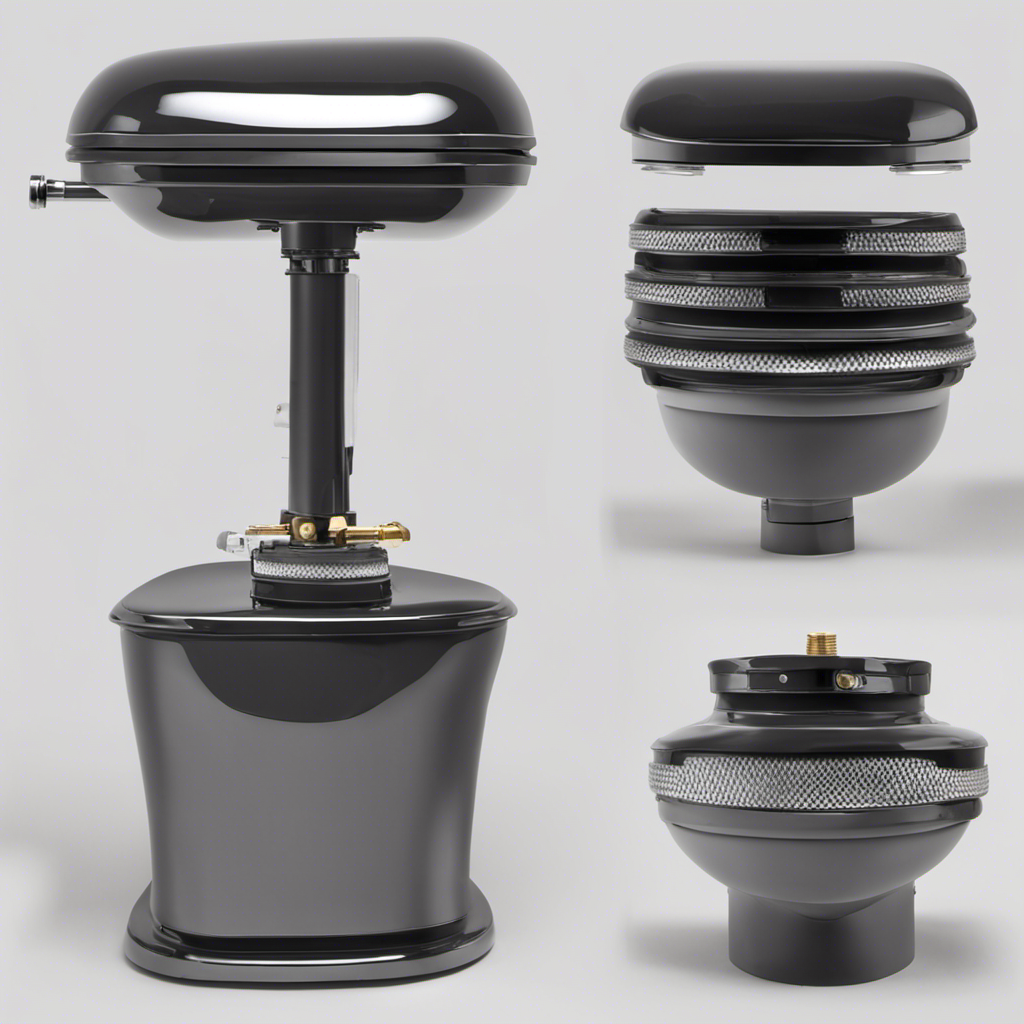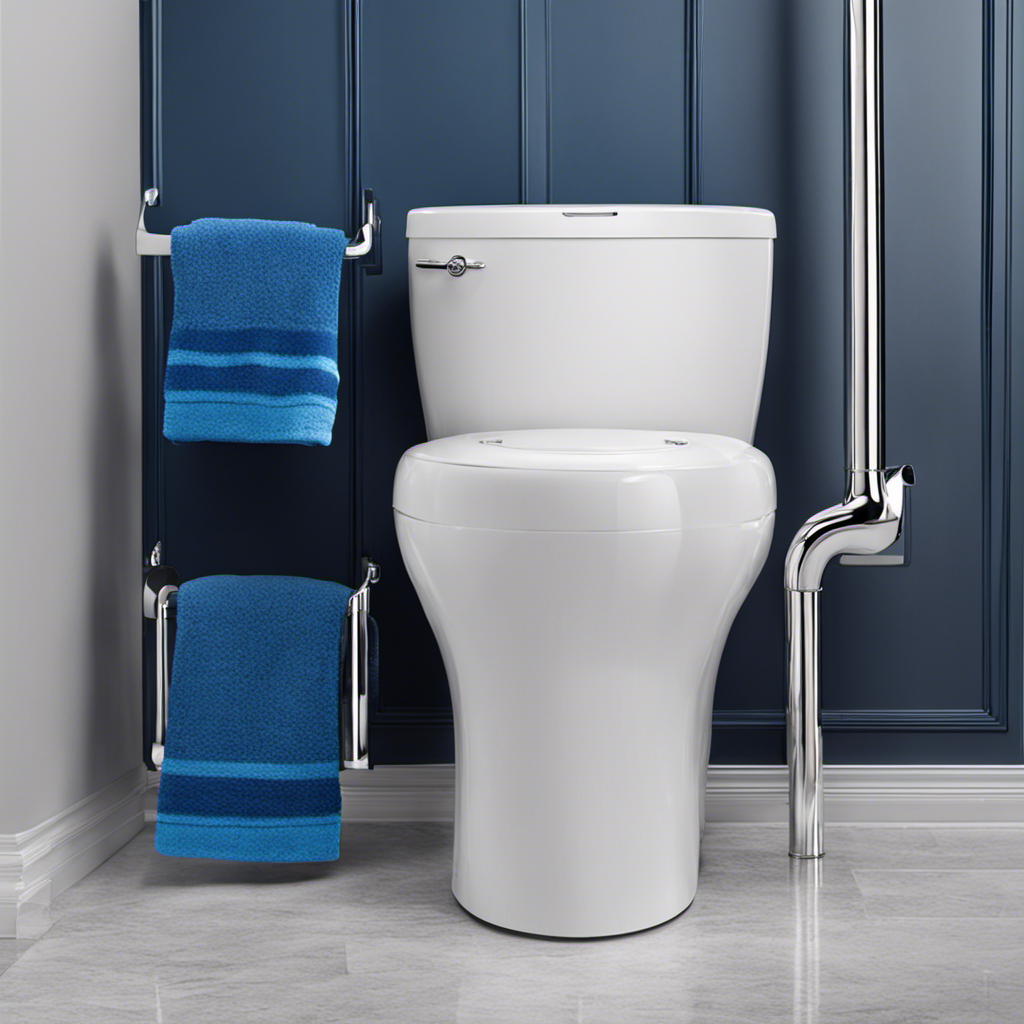Did you realize that when we flush the toilet, the water isn’t simply vanishing? Instead, it embarks on a trip through a network of pipes, undergoes processing at treatment facilities, and ultimately returns to the ecosystem.
In this article, we will explore the fascinating process of wastewater management and answer the question: does toilet water go into the ocean?
Join us as we delve into the impact on our oceans, the environmental concerns, and the sustainable solutions that can help protect our precious marine ecosystems.
Key Takeaways
- Toilet water goes through pipes and treatment plants before reaching the ocean.
- Aging infrastructure, sewer overflows, and improper disposal can lead to contamination.
- Contaminants like chemicals, pharmaceuticals, and pathogens can harm marine life.
- Understanding the journey and risks is crucial for protecting oceans.
The Journey of Toilet Water
Our toilets’ water takes a remarkable journey from our homes to the ocean. This journey isn’t a simple one; it involves a complex system of pipes and treatment plants to ensure that the water is safe before it reaches the ocean. However, along the way, there are potential risks of toilet water contamination and its impact on the ocean ecosystem.

When we flush the toilet, the water and waste go down the drain and into a series of pipes. These pipes transport the wastewater to a treatment plant, where it undergoes a rigorous process to remove any harmful substances. This treatment process includes physical, biological, and chemical treatment methods to ensure that the water is clean and safe.
Despite these efforts, there’s still a potential for toilet water contamination. This can occur due to aging infrastructure, sewer overflows, or improper disposal of chemicals and medications. These contaminants can find their way into the ocean, where they can have detrimental effects on marine life and the overall ecosystem. Contaminants such as chemicals, pharmaceuticals, and pathogens can disrupt the delicate balance of marine ecosystems and harm aquatic organisms.
Understanding the journey of toilet water and the potential risks of contamination is crucial in protecting our oceans. In the next section, we’ll explore the role of pipes in wastewater transportation and how they contribute to the overall management of toilet water before it reaches the ocean.
The Role of Pipes in Wastewater Transportation
As we continue exploring the journey of toilet water, it’s essential to understand the vital role that pipes play in the transportation of wastewater. Pipes and sewage systems are the backbone of waste disposal methods in modern society. They serve as the conduits that carry wastewater from our homes and businesses to treatment plants or directly into natural bodies of water.
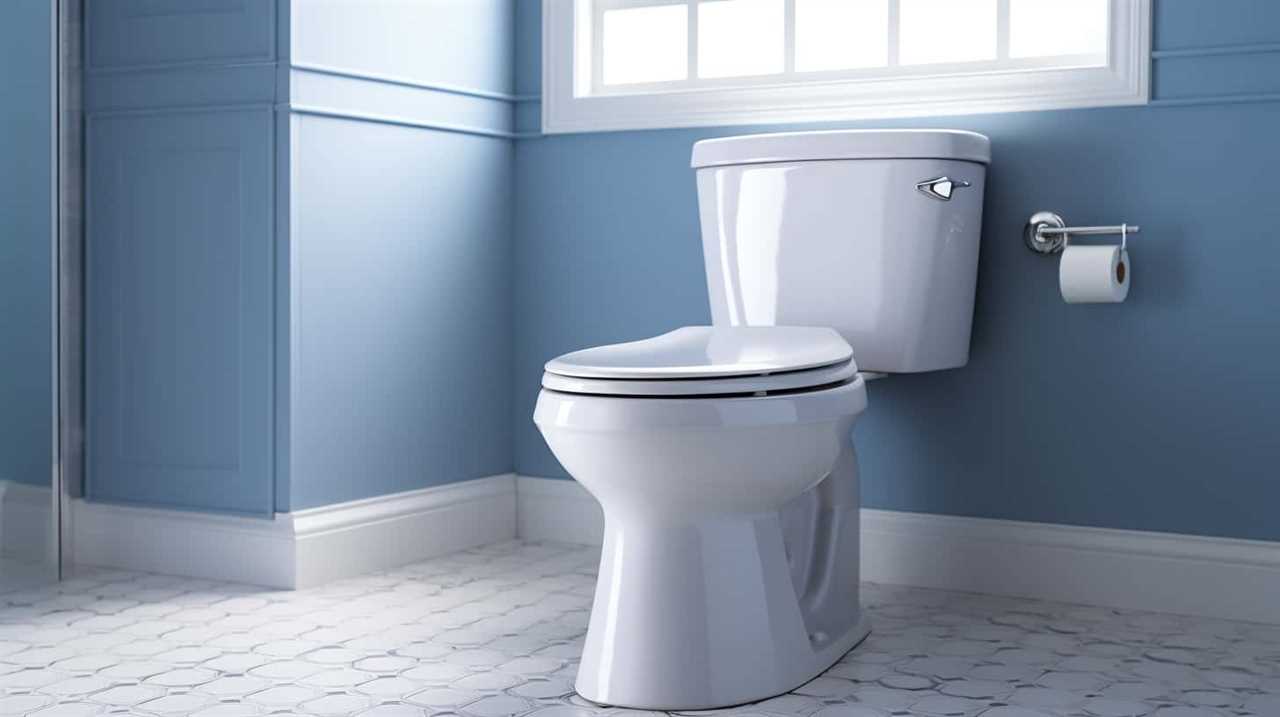
Pipes are designed to efficiently transport wastewater, ensuring that it flows smoothly and without any blockages. These systems are carefully engineered to handle the volume and pressure of the wastewater, preventing leaks or overflows. The pipes used in sewage systems are typically made of durable materials such as PVC or cast iron, which can withstand the corrosive nature of the waste.
The network of pipes and sewage systems is extensive, spanning across cities and towns, connecting every property to the larger system. This intricate infrastructure requires regular maintenance and inspection to detect any issues that could disrupt the flow of wastewater.
Proper waste disposal methods are crucial for public health and the environment. By utilizing pipes and sewage systems, we can safely transport wastewater to treatment facilities where it undergoes various processes to remove contaminants before being released back into the environment. These systems ensure that our waste is managed effectively, reducing the risk of pollution and promoting a cleaner and healthier ecosystem.
Understanding the Treatment Process
Now let’s take a closer look at the treatment process that ensures our toilet water doesn’t end up in the ocean.

The first step involves waste removal, where solid waste is separated and sent for further processing.
Then, the water undergoes a filtration process to remove any remaining impurities.
This treatment process plays a crucial role in protecting the environment and ensuring the sustainability of our water resources.
Waste Removal and Filtration
After flushing, toilet water is directed through a series of pipes and treatment facilities for removal of waste and filtration before it eventually reaches the ocean. This waste disposal process is an essential part of sewage management to ensure the protection of public health and the environment.
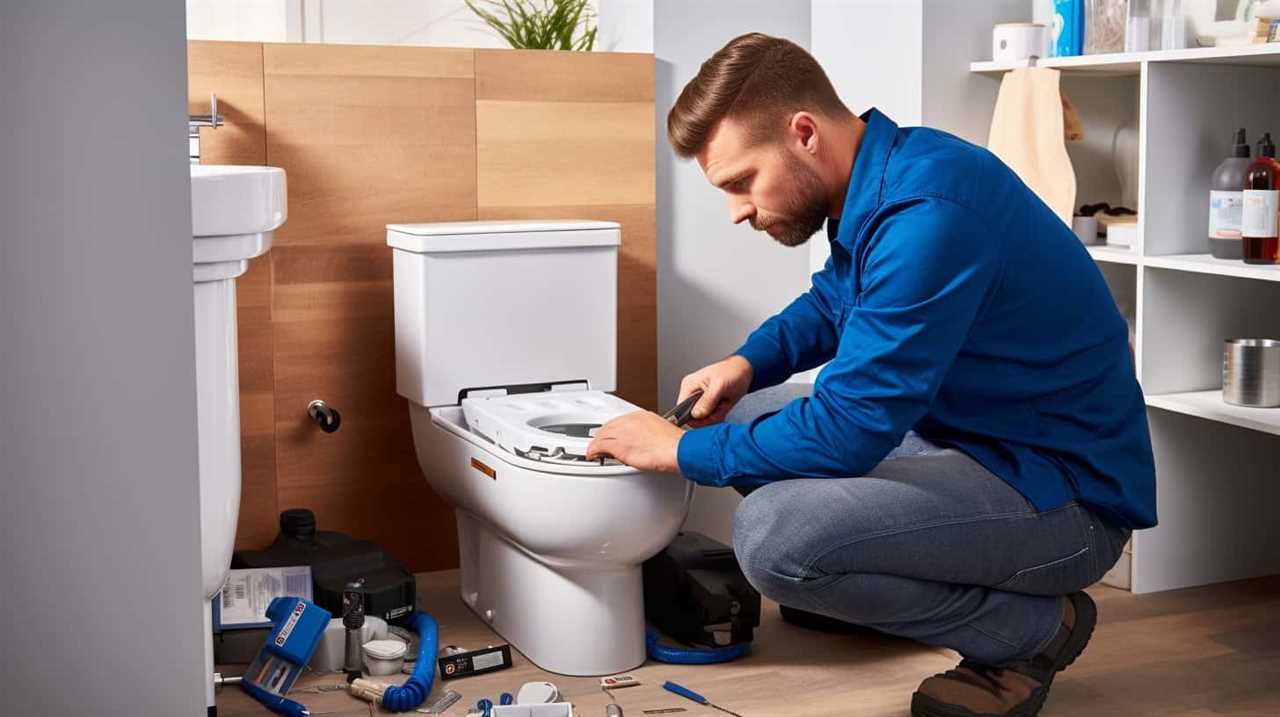
Here is a breakdown of the waste removal and filtration process:
- Primary Treatment:
- The first step involves removing large debris and solid waste through screens and grit chambers.
- The remaining wastewater is then sent to settling tanks, where solid particles settle to the bottom as sludge, while oils and greases rise to the surface and are skimmed off.
- Secondary Treatment:
- The partially treated water enters biological treatment systems, such as activated sludge or trickling filters, where microorganisms break down organic matter.
- This process helps remove nutrients and harmful bacteria.
Environmental Impact and Sustainability
Throughout the waste removal and filtration process, we actively work to understand the environmental impact and promote sustainability. Our goal is to minimize toilet water contamination and preserve the marine ecosystem. We employ a multi-step treatment process to ensure that the water released into the ocean is safe for marine life and the environment.
First, the wastewater from toilets travels through a network of pipes to a treatment facility. At the facility, the water undergoes several stages of treatment. This includes physical filtration to remove large debris and solids, followed by biological treatment, where microorganisms break down organic matter.
Next, the water goes through a disinfection process to eliminate harmful bacteria and viruses. Common disinfection methods include chlorination or ultraviolet (UV) radiation. Finally, the treated water is released into the ocean, where it undergoes further dilution and natural processes to ensure minimal impact on marine life.

Removing Pollutants and Harmful Bacteria
We actively remove pollutants and harmful bacteria from toilet water before it’s discharged into the ocean. Our goal is to ensure that the water entering the ocean is as clean and safe as possible. To achieve this, we employ various techniques and technologies for pollutant removal and water purification.
Here’s how we accomplish this:
- Physical filtration: We use screens and filters to remove larger particles, such as hair, paper, and other debris, from the toilet water. This helps prevent clogging and protects the following treatment processes.
- Chemical treatment: We employ chemical agents, such as chlorine or ozone, to disinfect the water and kill harmful bacteria and viruses. These chemicals effectively neutralize pathogens, ensuring that the discharged water is safe for marine life.
- Biological treatment: We utilize biological processes to further remove pollutants from toilet water. This involves the use of beneficial microorganisms that break down organic matter and remove nitrogen and phosphorus compounds. These microorganisms help improve the water quality and reduce the environmental impact.
- Advanced technologies: We continuously explore and implement advanced technologies, such as membrane filtration and ultraviolet disinfection, to enhance the efficiency of pollutant removal and water purification. These cutting-edge techniques enable us to provide even cleaner water to the ocean.
The Importance of Wastewater Treatment Plants
Wastewater treatment plants play a crucial role in preventing water pollution, ensuring safe water reuse, and reducing the environmental impact of wastewater.
By treating and filtering wastewater, these plants remove pollutants and harmful bacteria, making the water safe for discharge or reuse. This not only protects the health of marine ecosystems but also safeguards our own health by providing access to clean water for various purposes.
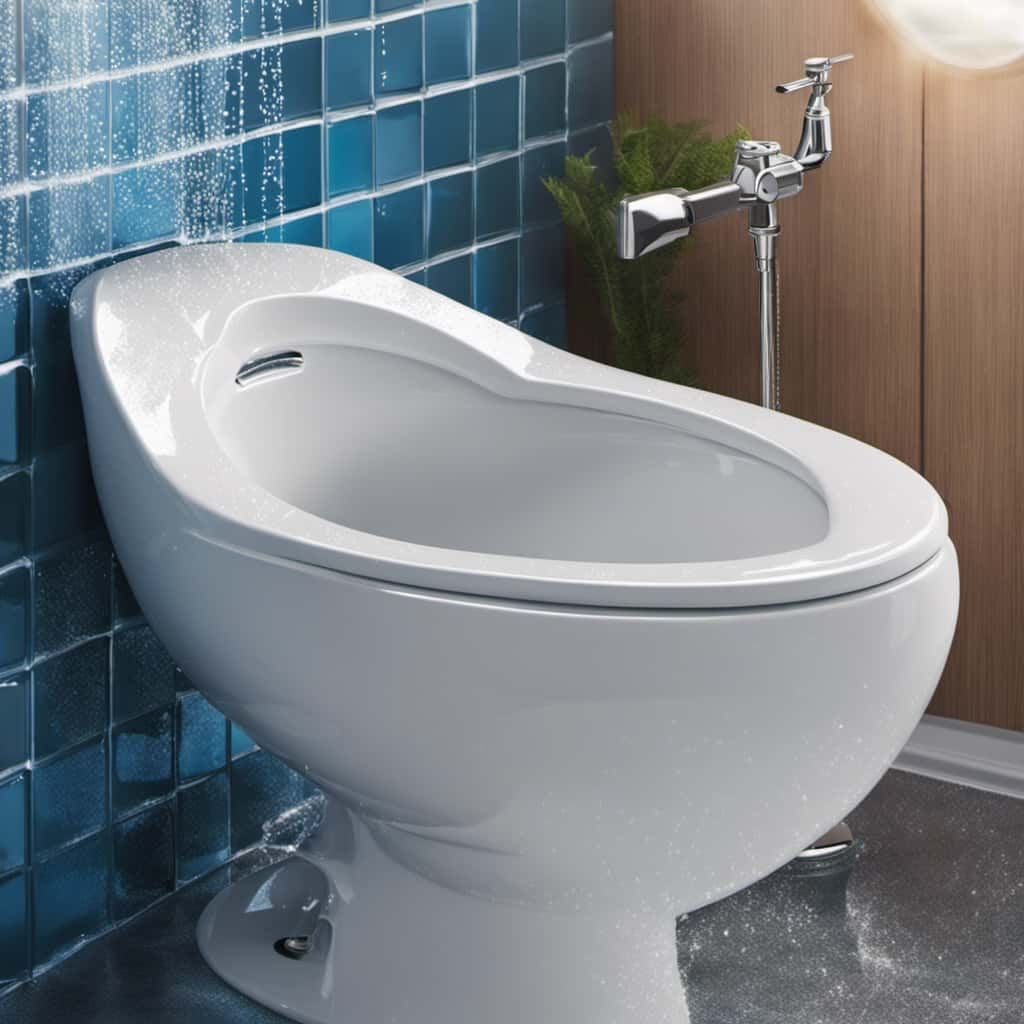
Wastewater treatment plants are an essential component of sustainable water management, promoting a healthier and more environmentally friendly future.
Water Pollution Prevention
Water pollution prevention is crucial in maintaining the health of our oceans, and one key component in this effort is the proper operation of wastewater treatment plants. These plants play a vital role in removing harmful pollutants from wastewater before it’s discharged into the environment.
To engage the audience and emphasize the importance of wastewater treatment plants, let’s explore two key aspects:
- Water quality monitoring: Wastewater treatment plants employ rigorous monitoring protocols to ensure that the treated water meets stringent quality standards. This involves regular testing of various parameters such as pH levels, dissolved oxygen, and nutrient concentrations. By closely monitoring water quality, treatment plants can identify any potential issues and take corrective measures to safeguard the environment.
- Community engagement: Wastewater treatment plants actively involve the local community in their operations. Through educational programs and public outreach initiatives, they raise awareness about the importance of proper wastewater management and the impact it has on water quality. By actively engaging the community, treatment plants foster a sense of responsibility and encourage individuals to adopt sustainable practices that help protect our oceans.
Safe Water Reuse
With proper treatment, toilet water can be safely reused, highlighting the importance of wastewater treatment plants.

Safe water reuse is a crucial aspect of sustainable practices, as it allows us to conserve and protect our precious water resources.
Wastewater treatment plants play a vital role in this process by removing harmful contaminants and bacteria from the wastewater, making it safe for reuse.
These plants employ advanced technologies such as filtration, disinfection, and chemical treatments to ensure that the treated water meets strict quality standards.
By reusing treated wastewater for purposes like irrigation, industrial processes, and even drinking water, we can significantly reduce our reliance on freshwater sources.

This not only conserves water but also reduces the strain on our ecosystems and promotes a more sustainable future.
Environmental Impact Reduction
To truly understand the environmental impact reduction achieved by wastewater treatment plants, it’s important to recognize the significant role they play in ensuring the safe reuse of treated water. Wastewater treatment plants are crucial in preserving our water resources and implementing sustainable practices for water conservation.
Here are two important reasons why wastewater treatment plants are vital in reducing environmental impact:
- Efficient removal of pollutants: Wastewater treatment plants use advanced technologies to remove harmful substances from wastewater, such as chemicals, bacteria, and solids. By effectively treating and removing these pollutants, wastewater treatment plants help prevent contamination of our rivers, lakes, and oceans.
- Water recovery and reuse: Wastewater treatment plants are designed to treat wastewater to a high standard, making the water safe for various non-potable uses. This includes irrigation for agriculture, landscaping, and industrial processes. By reusing treated water, wastewater treatment plants reduce the demand for freshwater resources, promoting water conservation and sustainability.
Where Does Treated Water Go
After treatment, the majority of the treated water is discharged into nearby rivers and streams. This is a crucial step in the water treatment process, as it allows for the safe disposal of wastewater. Let’s take a closer look at where treated water goes after it has undergone the necessary treatment processes.
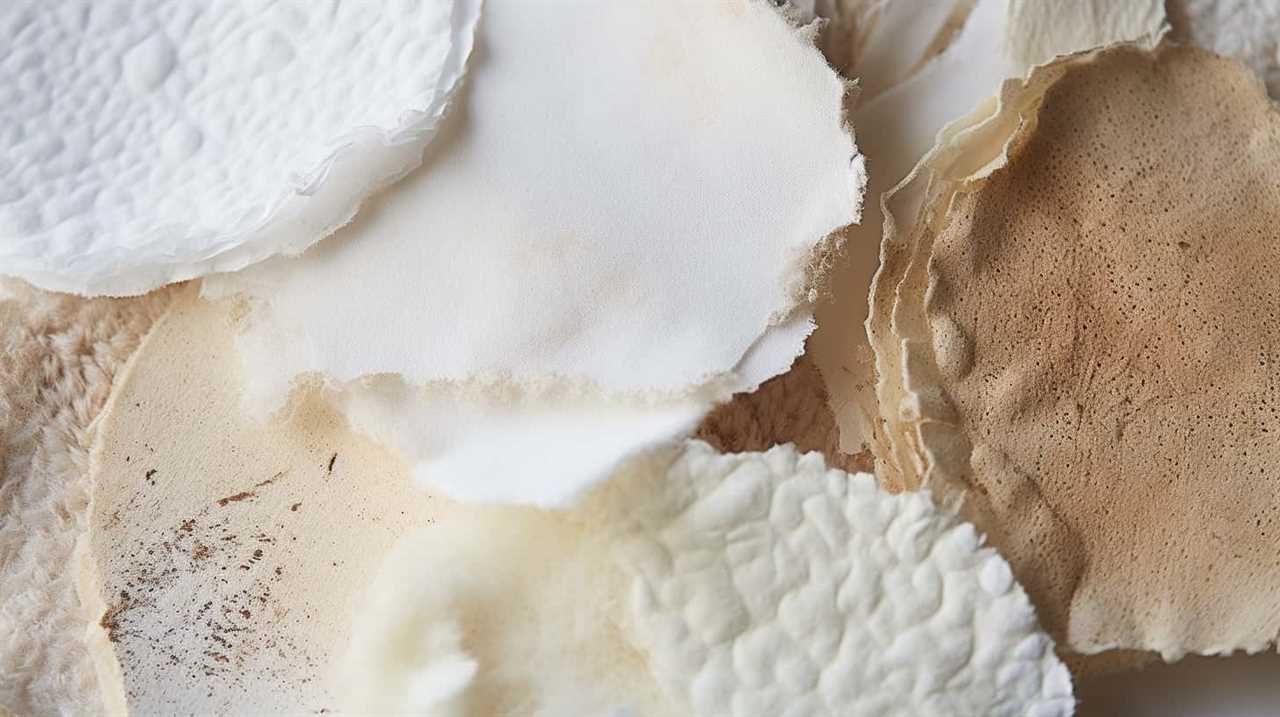
| Destination | Description | Benefits |
|---|---|---|
| Rivers and Streams | Treated water is often released into nearby rivers and streams. This helps replenish natural water sources and supports aquatic ecosystems. | – Restores water levels in rivers and streams |
- Provides a source of water for plants and animals |
| Reuse for Irrigation | In some cases, treated water can be used for irrigation purposes. This helps conserve freshwater resources and reduces the demand for potable water. | – Reduces the need for freshwater - Supports agricultural activities |
| Groundwater Recharge | Treated water is sometimes injected into the ground to replenish underground water sources. This helps maintain a healthy water balance and prevent groundwater depletion. | – Replenishes underground water sources - Prevents land subsidence |
Exploring the Impact on the Ocean
As we explore the impact on the ocean, let’s consider where the treated water that’s discharged into rivers and streams ultimately ends up. Sewage systems play a crucial role in managing human waste and preventing it from directly entering the ocean. However, the effects of toilet water on marine life and the role of sewage systems in ocean pollution can’t be ignored. Here are some key points to consider:
- Effects of toilet water on marine life:
- The discharge of treated water into rivers and streams can still have negative impacts on marine life, as some contaminants may not be completely removed during the treatment process.
- Chemicals from household products, pharmaceuticals, and personal care items can find their way into the ocean, affecting the health and reproduction of marine organisms.
- Nutrient enrichment from wastewater can lead to harmful algal blooms, which deplete oxygen levels in the water and harm marine life.
- Role of sewage systems in ocean pollution:
- Inadequate or outdated sewage systems can result in untreated or partially treated sewage being released into the ocean, causing pollution and endangering marine ecosystems.
- Combined sewer overflows, which occur during heavy rainfall, can lead to the discharge of untreated sewage directly into the ocean, further exacerbating pollution levels.
- Proper maintenance and upgrading of sewage systems are essential to minimize the impact on the ocean and protect marine life.
Understanding the effects of toilet water on marine life and the role of sewage systems in ocean pollution is crucial in implementing effective measures to mitigate these impacts. By prioritizing the health of our oceans, we can ensure a sustainable future for both marine ecosystems and human communities.
Environmental Concerns and Solutions
Continuing our exploration of the impact on the ocean, let’s delve into the environmental concerns and solutions surrounding the discharge of toilet water.
When it comes to the disposal of wastewater, there are legitimate concerns about its potential impact on the environment. The primary concern is the contamination of water bodies, including oceans, due to the presence of harmful chemicals and pathogens.

Water conservation is a crucial aspect of addressing these concerns. By implementing water-saving measures such as dual-flush toilets, low-flow showerheads, and efficient irrigation systems, we can reduce the amount of wastewater produced. Additionally, promoting awareness about responsible water usage and encouraging individuals to adopt water-saving habits can make a significant difference.
Another solution lies in the use of renewable energy sources to treat wastewater. Traditional wastewater treatment plants consume substantial amounts of energy, contributing to greenhouse gas emissions. By transitioning to renewable energy sources like solar or wind power, we can reduce the carbon footprint of the treatment process.
Furthermore, implementing advanced treatment technologies can help remove contaminants more effectively, ensuring that the discharged water is cleaner and safer for the environment. These technologies, such as membrane filtration and ultraviolet disinfection, can remove a greater percentage of pollutants, protecting the ocean from potential harm.
Conclusion: A Sustainable Approach to Wastewater Management
To ensure a sustainable approach to wastewater management, we must prioritize water conservation, renewable energy use, and advanced treatment technologies. By implementing these strategies, we can effectively address the environmental concerns associated with wastewater disposal and promote a more sustainable future.
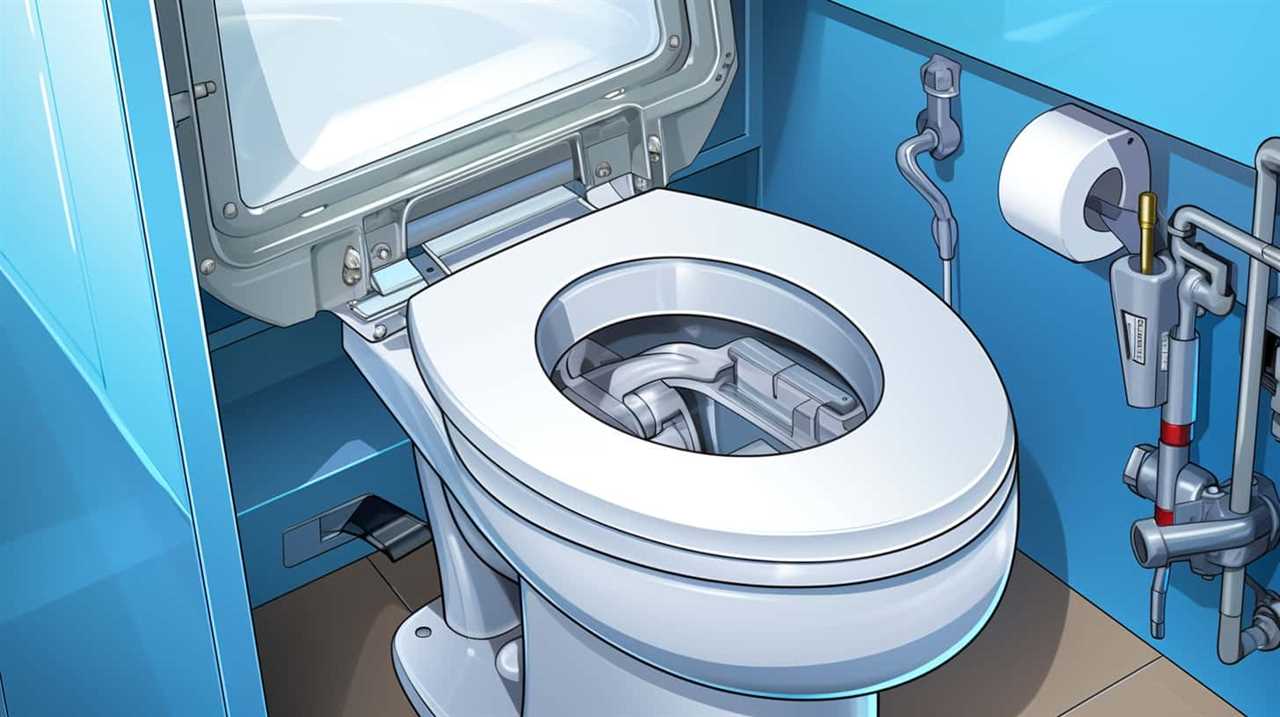
To achieve this, it’s crucial to invest in sustainable technologies that can help minimize the environmental impact of wastewater management. These technologies include advanced treatment systems that can remove harmful contaminants from wastewater, such as microorganisms and chemicals. Additionally, implementing water conservation measures, such as rainwater harvesting and graywater reuse, can reduce the amount of wastewater generated and alleviate the strain on freshwater resources.
Community involvement is also essential in ensuring the success of sustainable wastewater management practices. Educating the public about the importance of responsible water use and the benefits of sustainable technologies can encourage individuals to actively participate in water conservation efforts. Furthermore, engaging local communities in the decision-making processes regarding wastewater management can foster a sense of ownership and responsibility, leading to more effective and sustainable solutions.
Frequently Asked Questions
How Long Does It Take for Toilet Water to Reach the Ocean?
Toilet water, after being flushed, goes through a series of treatment processes to remove pollutants. These treatments involve removing solid waste, filtering out harmful substances, and disinfecting the water.
Once treated, the water is often released into nearby rivers or bodies of water. The time it takes for toilet water to reach the ocean can vary depending on factors such as the distance to the nearest water source and the speed of the water flow.

What Happens to Toilet Water if It Is Not Treated?
When toilet water isn’t treated, it can have significant impacts on the environment and pose potential contamination risks. Untreated toilet water may contain harmful bacteria, viruses, and chemicals that can pollute water sources and ecosystems. This can lead to the spread of diseases, damage to aquatic life, and degradation of water quality.
Therefore, it’s crucial to ensure proper treatment of toilet water to minimize these risks and protect our oceans and waterways.
Are There Any Risks Associated With Using Treated Water From Wastewater Treatment Plants?
When it comes to using treated water from wastewater treatment plants, there are potential risks to consider. While the water undergoes a thorough treatment process to remove impurities, there’s still a possibility of residual contaminants. These can include chemicals, pharmaceuticals, and microorganisms.
However, it’s important to note that strict regulations and monitoring systems are in place to ensure the safety of the treated water. By adhering to these guidelines, the risks associated with using treated water can be minimized.
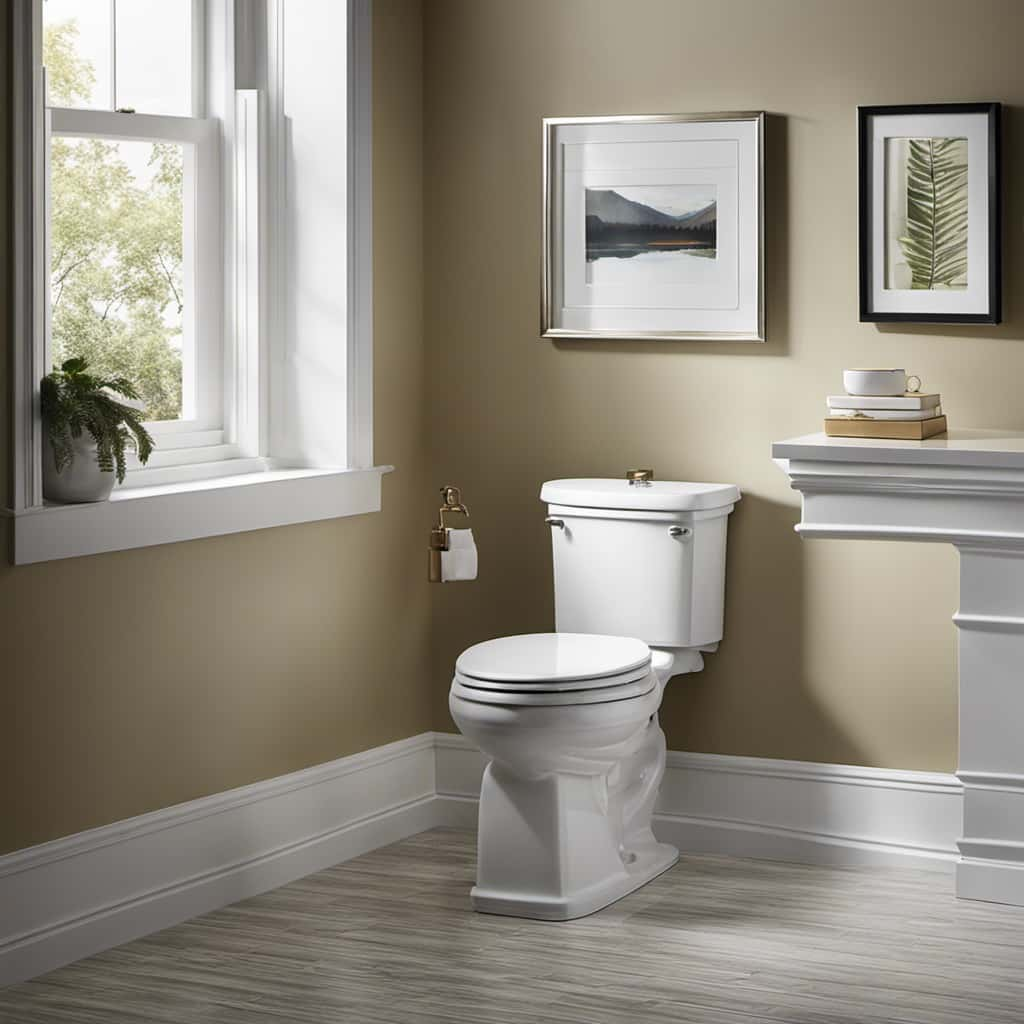
Can Wastewater Treatment Plants Completely Remove All Pollutants and Harmful Bacteria From Toilet Water?
Toilet water contaminants can be a real concern for many people. We often wonder if wastewater treatment plants can completely remove all pollutants and harmful bacteria from our toilet water. It’s a valid question, as we want to ensure the safety and cleanliness of our environment.
However, it’s important to note that wastewater treatment plants employ advanced technologies and processes to achieve high microbial removal efficiency. These plants are designed to effectively treat and purify the water before it’s discharged, minimizing any potential harm to the ocean.
What Measures Can Be Taken to Minimize the Environmental Impact of Wastewater Treatment Plants on the Ocean?
To minimize the environmental impact of wastewater treatment plants on the ocean, we can implement various measures.
Firstly, improving wastewater treatment methods can help remove pollutants and harmful bacteria more effectively.
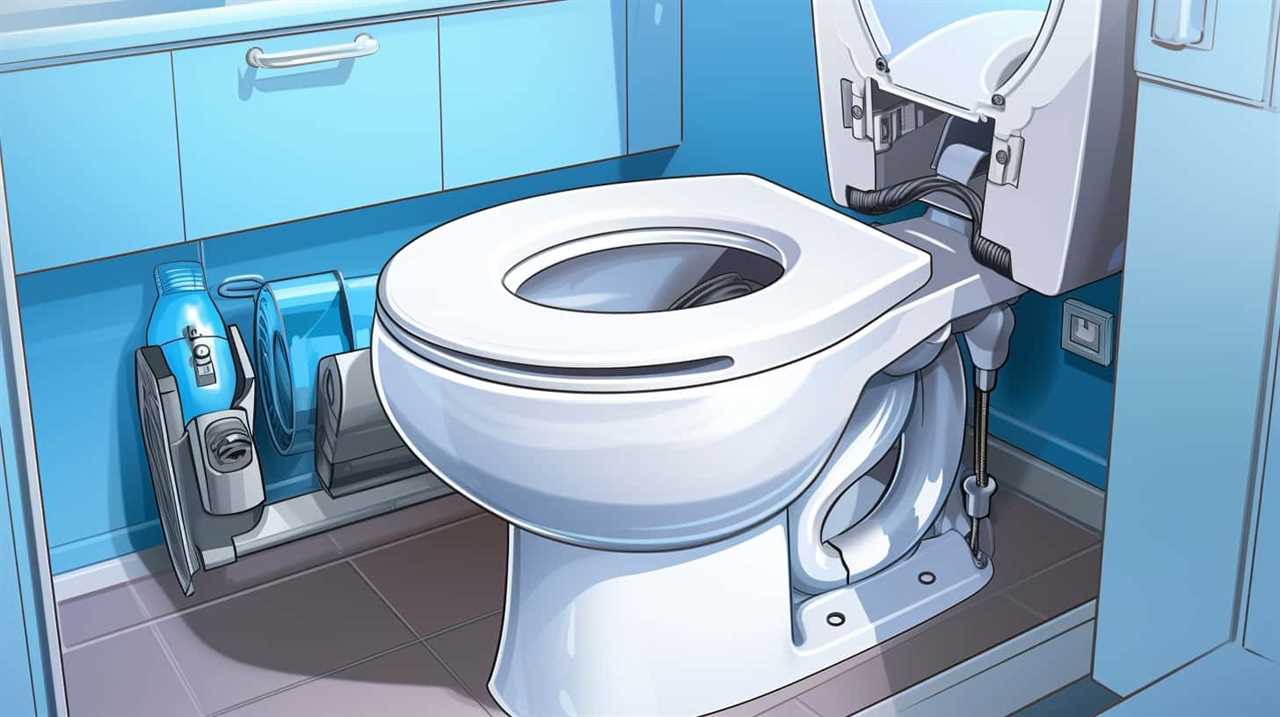
Additionally, promoting the recycling of wastewater for non-potable uses such as irrigation or industrial processes can reduce the amount of treated water being discharged into the ocean.
These measures are crucial in protecting marine ecosystems and ensuring the sustainability of our water resources.
Conclusion
In conclusion, as we’ve journeyed through the process of wastewater treatment and the impact on the ocean, it becomes clear that our approach to wastewater management must be sustainable.
By understanding the role of pipes, the treatment process, and the importance of treatment plants, we can ensure that treated water is safely returned to the environment.
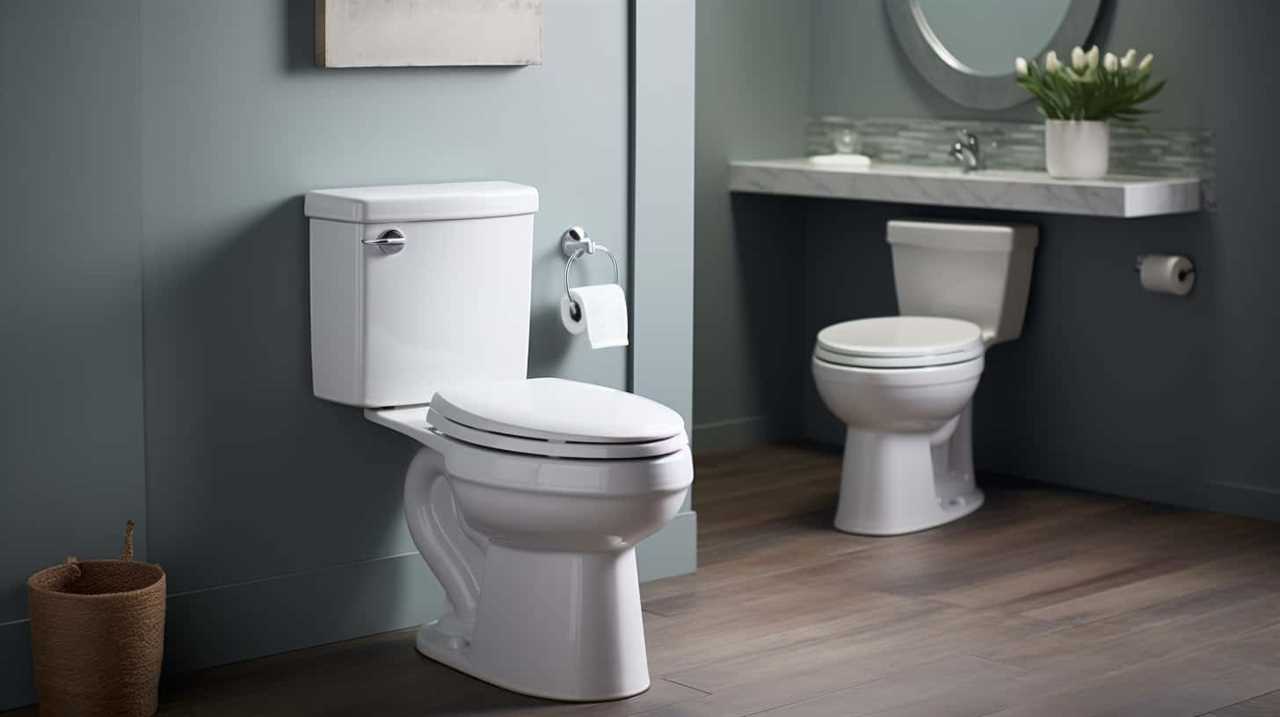
Let’s not forget that our actions have a profound effect on the world around us, and it’s our responsibility to protect and preserve our oceans for future generations.




